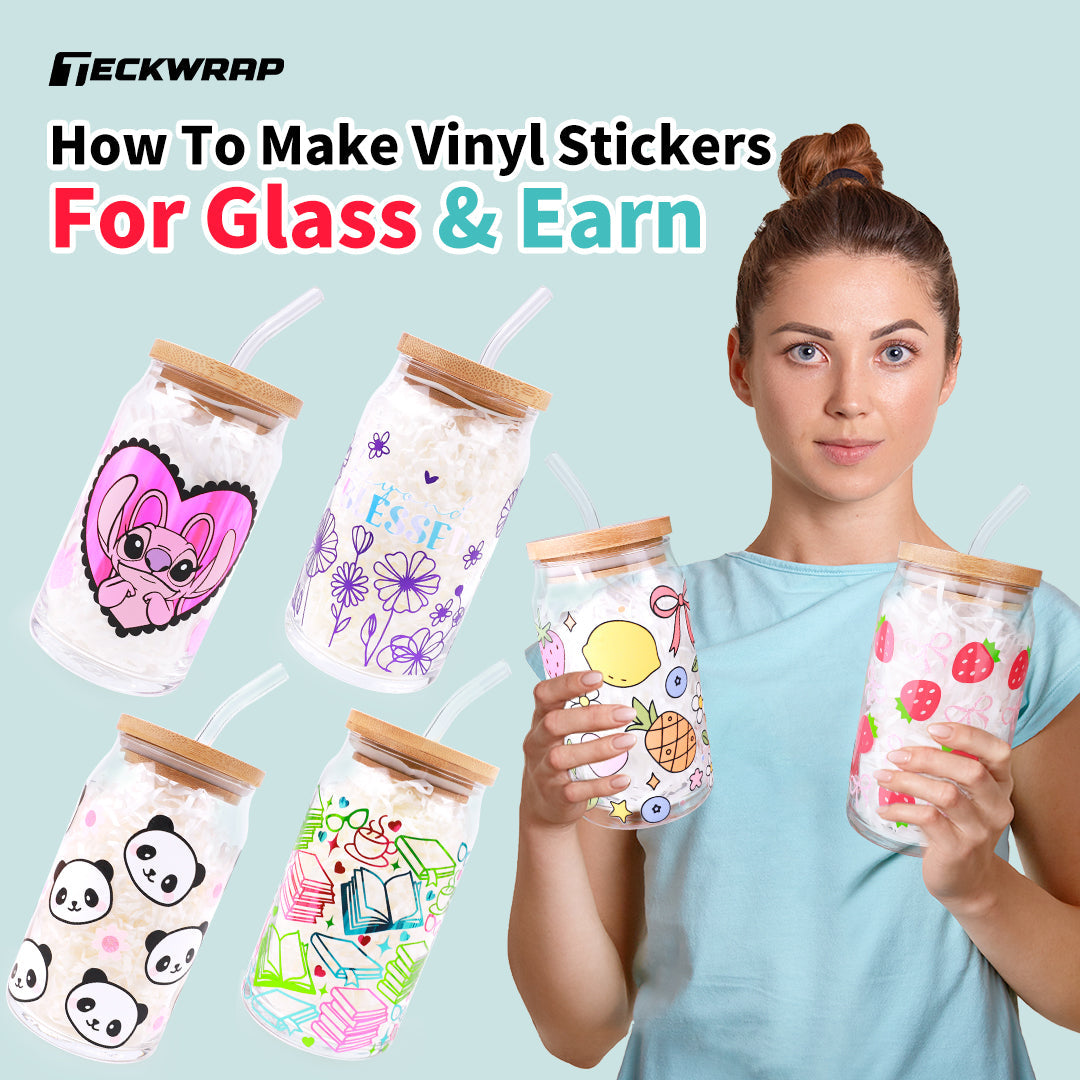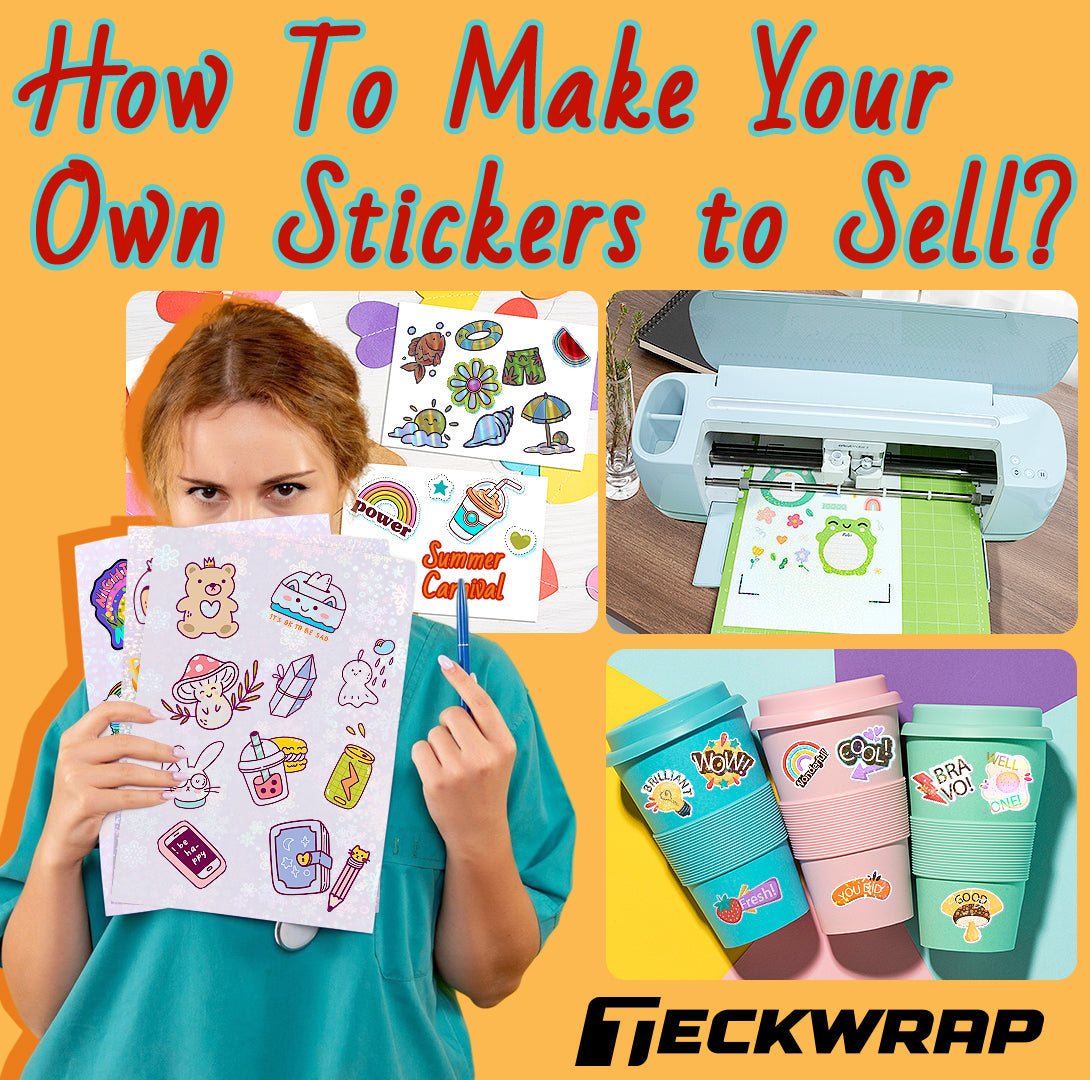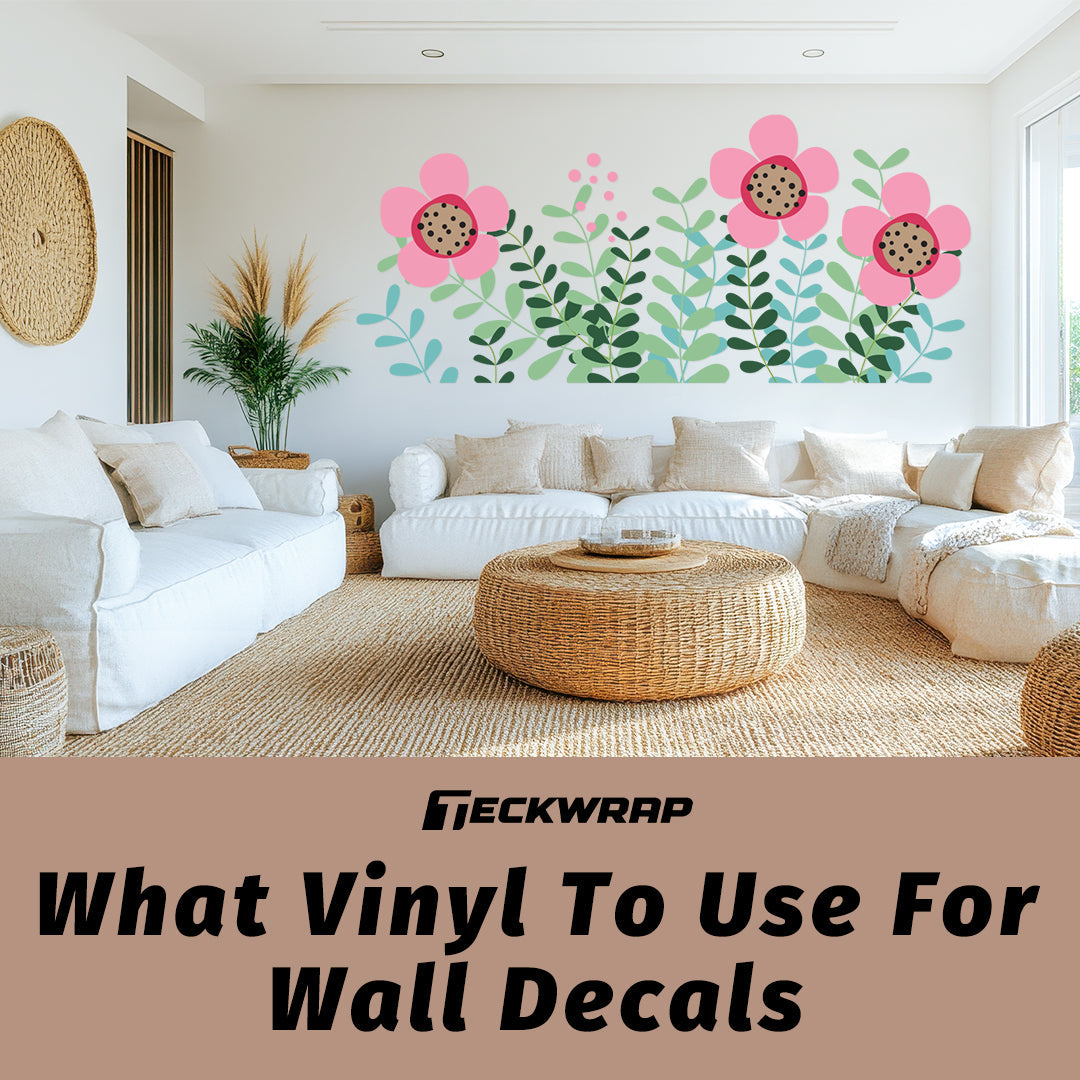Updated By TeckWrap Craft On February 27, 2025
Food Safe Sealant For Mugs You Can Try

Table Of Contents
- What Are Sealants On Mugs For?
- What Is A Food Grade Sealant?
- Food-Safe Sealant You Can Try
- Dishwasher-Safe Does Not Necessarily Mean Food-Safe And Vice Versa
- What Type Of Mug Is Best For Vinyl Printing?
- Why Should You Seal Vinyl On A Mug?
- How To Apply Sealant On A Mug?
- Step 1: Clean The Mug
- Step 2: Apply The 1st Coat
- Step 3: Let It Dry
- Step 4: Repeat The Process, Apply The Second And Third Layer
- Step 5: Cure The Mug
- Tips To Remember When Printing Mugs With Vinyl And Applying A Sealant
- Frequently Asked Questions
You have designed your amazing set of mugs with premium-quality permanent adhesive vinyl and would like to further increase its lifespan. The best way to do so is to apply a food-safe sealant on them. There are many sealants available on the market, but if you are applying one to a mug in which you will serve and enjoy your favorite hot chocolate or coffee, you have to make sure it is approved by the FDA and is completely non-toxic. Read on to learn about food-safe sealants, their process of application, and important tips to remember.
What Are Sealants On Mugs For?
Generally speaking, sealants are used as barriers between harsh elements and your vinyl design for protection and longevity. They coat the design completely to keep away dirt, dust, moisture, and chemicals. They also prevent fluctuating temperatures from affecting your craft making it last longer. Hence sealants resist fading, chipping, and wear from heat or washing, improving the durability of your vinyl designs and preserving their appearance.
Yes, for any blank that needs to be washed frequently like mugs, glasses, or tumblers, you must use permanent craft adhesive vinyl. However, it is not recommended to use sealants for clear products like glasses as the brush strokes will show and the product will look cloudy.

What Is A Food Grade Sealant?
A food-grade sealant is one with very low toxicity. It is safe for use on mugs with glaze coating, porcelain paint, or ceramic paint. It contains less chemicals and will not pose any health hazards.
Food-grade sealants are specially made for surfaces that come into contact with food and drinks. Even if you apply them only to the outside of a mug, there’s still a chance they could touch your beverage, especially through handling or condensation. That’s why it’s important to choose a sealant that’s safe, non-toxic, and designed for food-related use.

Food-Safe Sealant You Can Try
When you are sealing your adhesive vinyl design on a mug or any other utensil that will come in contact with food or your mouth, always see whether the product you are using is approved by the FDA or not. There is no compromise on health and sealant must be completely food-safe.

FDA-Compliant Epoxy Resin
Max CLR is a clear, tough, and resilient epoxy that is FDA-approved and can be used on surfaces that can come in contact with food and beverages. The catch is that you must prepare it with utmost care following the instructions to the letter and allow it to cure properly before using your mug. When fully cured, it forms a non-toxic, waterproof, and heat-resistant barrier, making it ideal for sealing vinyl designs on mugs.

Another Commonly Used Sealant - Mod Podge
One of the first choices of crafters as a sealant for mugs, ceramic, metal, and even wood is the Dishwasher Safe Mod Podge. It is not food-safe. It is a decoupage formula that works as a sealant and glue, especially for art supplies. It is different from a regular Mod Podge because it can make a ceramic mug designed with adhesive vinyl dishwasher-safe.
It is a water-based and non-toxic sealant. When you apply it to mugs, it dries quickly and leaves a durable finish on the mug. Make sure to watch this dishwasher-safe mug tutorial: The One Hack To Make Vinyl Mugs Dishwasher Safe.

Dishwasher-Safe Does Not Necessarily Mean Food-Safe And Vice Versa
Does dishwasher-safe also mean food-safe? No! If a sealant claims that it’s dishwasher-safe it’s not necessarily food safe. This means food or beverage should be prevented from coming into contact with the sealant, and vice versa. So if you are using a dishwasher-safe Mod Podge, you have to make sure your food or mouth doesn't touch it.
What Type Of Mug Is Best For Vinyl Printing?
As you know, there are different types of mugs available on the market depending on the material they are made from. The most common materials used for mugs are wood, ceramic (with polymer clay), bone china, porcelain, stoneware, and Pyrex.
But what is the best mug for vinyl printing? You can use any type of mug mentioned above for this. However, ceramic mugs are recommended for vinyl printing that involves applying a sealant. Especially in cases where you need to bake the mug in the oven.
Remember, you cannot use sealants on clear, transparent, or Pyrex mugs. Most sealants have colors or a glue-like consistency. If you use one of them on a clear mug, the whole look of your project might get ruined. Not unless you’re aiming for a frosty look then that’s an idea you can try.

Why Should You Seal Vinyl On A Mug?
As mentioned earlier, the main reason for sealing vinyl on a mug is to keep the print in place and ensure the design sticks longer. Many crafters attest that vinyl sticks longer on a mug if a sealant is applied.
After sealing your vinyl design with a food-grade sealant, you can even place your mug in the dishwasher without any worry. Applying sealant on a mug is a different and longer process, read further to know more.

How To Apply Sealant On A Mug?
After you have transferred the permanent adhesive vinyl design to your mug and allowed it to cure completely, it's time to apply a sealant to it for reinforcement.
If you’re a beginner and want to learn the basics of vinyl mug printing, make sure to read our post on How to Make Personalized Mugs at Home or you can watch this video on TeckWrap Craft’s YouTube channel: An Easy Way to Customize a Mug With TeckWrapCraft Vinyl.

Here are the supplies needed for the sealing process:
- Food-safe sealant for mug.
- Brush.
- Clean cloth or paper towel.
- Rubbing alcohol.
- Oven for baking (optional).
Step 1: Clean The Mug
If you have applied your vinyl design and it is perfectly well-aligned with all the bubbles removed, leave the mug for a day to cure. Now start with cleaning your mug. Yes, you should have cleaned the mug before placing the vinyl, that’s an essential step.
However, during design application, the mug can get dirty again, especially when it is frequently touched. Some dirt and dust might also have touched the surface so it’s better to clean it again. This time make sure to clean the whole surface because you’ll be applying the sealant on the whole mug.
Why is the sealant applied to the whole surface? This will be explained later on. Use a microfiber cloth and rubbing alcohol to clean the mug. It’s better to hold onto the handle and avoid touching the surface of the mug during cleaning and the entire sealing process.

Step 2: Apply The 1st Coat
After cleaning the mug, apply the first coat of the sealant using a soft paintbrush. Apply a very thin coat on the whole mug with even strokes. Cover both the printed and the blank part, except the rim of the mug where it will most likely touch your mouth. This is an important part to remember. Even though you are using a food-safe sealant, you should minimize contact with it.
All the strokes of your brush should be in the same direction. Remember, a sealant sets quickly, so make sure to apply it swiftly, smoothly, and in the same direction at all times.

Step 3: Let It Dry
After applying the first coat, let it dry for an hour before applying the second coat. You can also use a blow dryer for a faster drying process, which will shorten the time to 15 to 30 minutes.
How will you know if the coating is still wet? The overall look will be streakier. Do not apply a coat of the sealant until the mug has completely dried off. Apply three layers like this.

Step 4: Repeat The Process, Apply The Second And Third Layer
After you’re completely sure that the first coat has dried, repeat the process and apply the second and third layers. Don’t forget to allow one hour of drying time between each coat.

Step 5: Cure The Mug
The last step is to cure the mug. This means you have to allow the sealant to dry and set in before using it. There are two ways you can do this: using an oven or simply letting it sit.
If you don’t want to use the oven, store your mug in a clean and dry place for 28 days (this is the recommended cure time). Here’s the process of using the oven:
- Place the mug in a cool oven.
- Set it to 350 degrees and bake for 30 minutes.
- When the time is up, don’t open the oven just yet. Let the mug and the oven cool down completely. Give it at least 10 to 15 minutes.
- Store it in a cool and dry place.
- Wait for at least 72 hours before using the mug.

Tips To Remember When Printing Mugs With Vinyl And Applying A Sealant
- If you intend to design a vinyl-printed mug with a sealant on it as a gift, start working on it a month before as the curing period takes at least 28 days.
- Mod Podge sealants are best used on light-colored mugs as the brush strokes are less visible on these.
- If you do not want to apply the sealant, use a good-quality permanent adhesive vinyl and your design will last. You cannot place the mug in the dishwasher then.
- Use a good, brand-new paintbrush when applying the sealant.
- Mugs printed with vinyl without the sealant are not dishwasher safe.
- Make sure the printed design is far from the rim of the mug so you won’t have to apply sealant in that area.
Apart from mugs, you can also print vinyl on ceramic plates or bowls with a fired glaze finish. Use food-safe sealants. You can use the plate with ease, even if it comes in direct contact with food.

Frequently Asked Questions
Final Thoughts
To sum it all up, always check the product label of the sealant if it’s safe for application on mugs or plates or not. One last thing, when it comes to the type of vinyl to use when designing mugs, always opt for permanent adhesive vinyl. Make sure to check out the adhesive vinyl at TeckWrap Craft.




